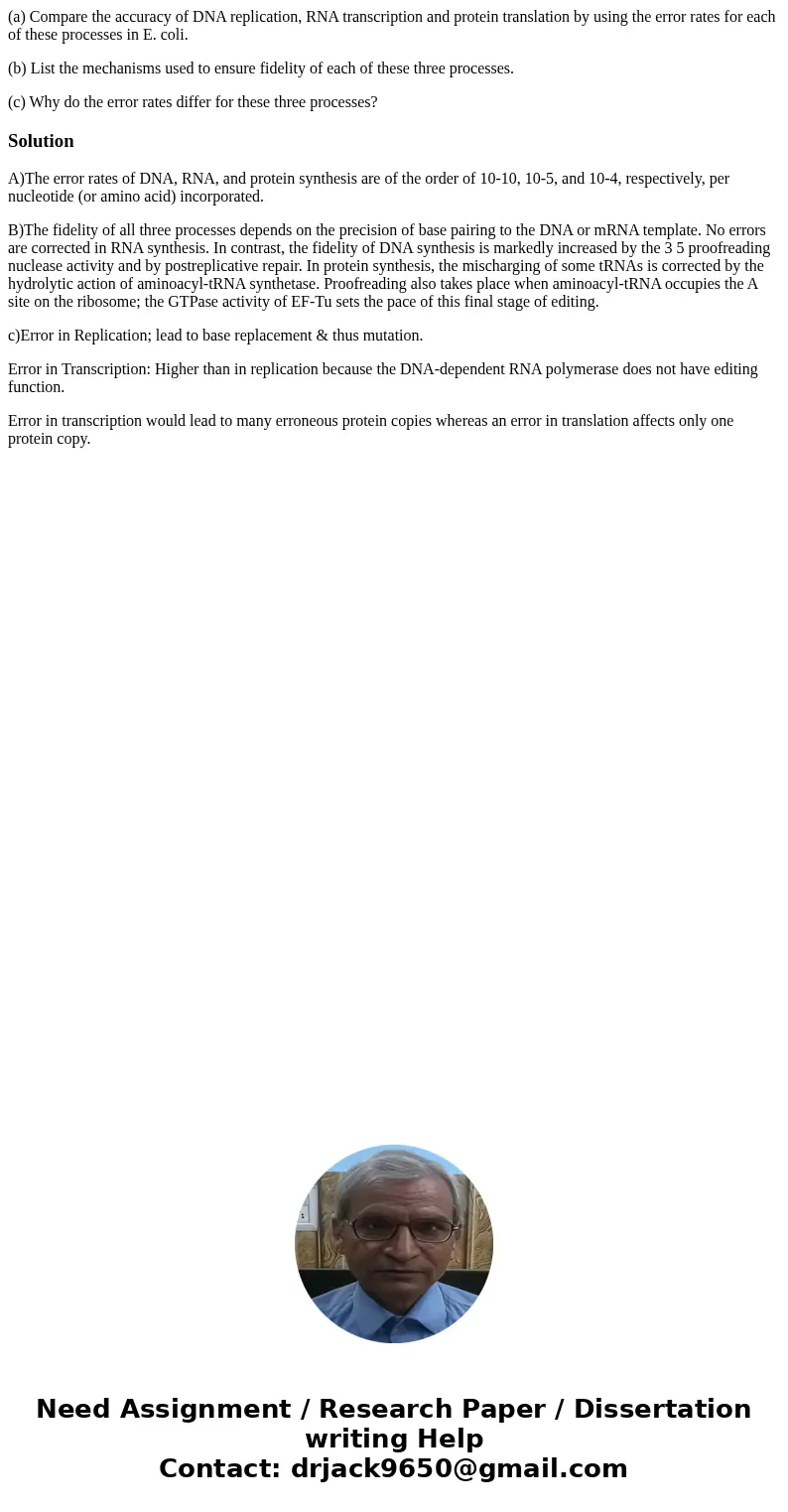a Compare the accuracy of DNA replication RNA transcription
(a) Compare the accuracy of DNA replication, RNA transcription and protein translation by using the error rates for each of these processes in E. coli.
(b) List the mechanisms used to ensure fidelity of each of these three processes.
(c) Why do the error rates differ for these three processes?
Solution
A)The error rates of DNA, RNA, and protein synthesis are of the order of 10-10, 10-5, and 10-4, respectively, per nucleotide (or amino acid) incorporated.
B)The fidelity of all three processes depends on the precision of base pairing to the DNA or mRNA template. No errors are corrected in RNA synthesis. In contrast, the fidelity of DNA synthesis is markedly increased by the 3 5 proofreading nuclease activity and by postreplicative repair. In protein synthesis, the mischarging of some tRNAs is corrected by the hydrolytic action of aminoacyl-tRNA synthetase. Proofreading also takes place when aminoacyl-tRNA occupies the A site on the ribosome; the GTPase activity of EF-Tu sets the pace of this final stage of editing.
c)Error in Replication; lead to base replacement & thus mutation.
Error in Transcription: Higher than in replication because the DNA-dependent RNA polymerase does not have editing function.
Error in transcription would lead to many erroneous protein copies whereas an error in translation affects only one protein copy.

 Homework Sourse
Homework Sourse